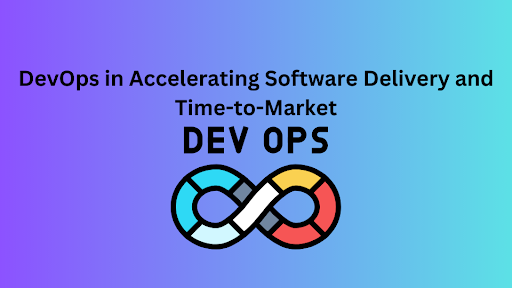DevOps in Accelerating Software Delivery and Time-to-Market
The software development profession thrives on an excellent grasp of DevOps practices. As much as organisations are now moving to embrace DevOps, so many things have changed. This blog is about how DevOps can be revolutionary and enable shorten time-to-market and accelerate software delivery.
DevOps has revolutionised the way in which software is developed, deployed and managed; from the core principles of CI and CD to intricacies of infrastructure such as code and constant monitoring. Whether you are new to IT or just starting your DevOps Course, this blog will show you why DevOps is important for modern software development.
Table Of Contents
- Streamlined Collaboration and Communication
- Benefits of Continuous Integration and Continuous Delivery (CI/CD)
- Infrastructure as Code (IaC): Explained
- Continuous Monitoring and Feedback
- Cultural Shift and Organisational Transformation
- Automated Testing and Quality Assurance
- Conclusion
Streamlined Collaboration and Communication
Software delivery pipeline delays, miscommunication, and incomplete requirements resulted from the old separate development and operations team’s model. The development lifecycle witnesses a collaborative DevOps environment where the developers, testers, and operations engineers combine their efforts for the best results.
Because of DevOps’s emphasis on cross-functional teams, all parties participating in software delivery are better able to comprehend and accommodate one another’s needs, limitations, and goals. This synchronisation removes obstacles and quickens the rate of advancement.
Benefits of Continuous Integration and Continuous Delivery (CI/CD)
CI involves sending new code to a central repository at fixed periods of time. When the tests are automated and triggered with a new integration, it ensures that the new code retains its integrity and doesn’t upset the existing functionality. Ultimately, CI ensures that bugs (if any) will be detected and fixed at an initial development stage.
Continuous Deployment (CD) automates the deployment process, taking CI to the next level. With each build that passes automated tests, CD automatically updates production or staging environments. CD promises a human-intervention free process of delivering software upgrades, thereby improving the efficiency of the process.
Infrastructure as Code (IaC): Explained
The significance of IaC is prominent when it steps in to reduce the otherwise large error margin and lengthy process of infrastructure setup and configuration. One DevOps approach is “Infrastructure as Code” (IaC), which involves treating infrastructure settings like code. It lets programmers automate infrastructure deployment and management with scripts or configuration files.
With IaC, developers can specify infrastructure needs using domain-specific configuration languages or widely used programming languages. These infrastructure definitions undergo version control, testing, and deployment along with the application code. Teams can keep development, testing, and production environments consistent, replicate setups, and rapidly spin up or pull-down environments.
Continuous Monitoring and Feedback
According to DevOps, gathering feedback from production settings is crucial for driving continuous improvement. Application logs, performance metrics, and user input are just a few sources of data that Continuous Monitoring may collect and analyse.
Teams can spot problems, pinpoint bottlenecks, and prioritise optimisation areas by monitoring real-time key performance indicators (KPIs) and user interactions. Teams may iteratively improve features, make data-driven decisions, and speed up customer value delivery with this feedback loop.
Cultural Shift and Organisational Transformation
DevOps has repeatedly proven its mettle at simplifying software development and deployment processes, due to which organisations are increasingly dependent on it. However, since it accounts for a huge cultural shift, it is important that teams keep an open mind to change and actively participate in fostering a more collaborative environment.
Organisations must train and enhance their personnel’s skills to adopt DevOps techniques and principles. Team Leaders shoulder great responsibility in introducing and maintaining a comfortable and cooperative ecosystem to promote constant growth.
Automated Testing and Quality Assurance
The value of good-quality software has remained unchanged till today. In modern business, nothing is more critical than ensuring high-quality software. DevOps emphasises automated testing throughout the development lifecycle to keep quality standards high and identify defects early. As soon as a team commits a new code, they may run a battery of tests—unit, integration, and end-to-end tests—by incorporating automated testing frameworks into the continuous integration and delivery pipeline.
This computerised testing approach boosts the feedback loop and user confidence in the software’s performance and dependability. Developers can quickly iterate, fix problems, and provide customers with software solutions that meet their expectations via continuous testing.
Conclusion
It is safe to say that DevOps has brought a visible shift in the way the software development and delivery domain operates, for the better. The core values of DevOps – collaboration, cooperation, and process automation – have enhanced the rate of output considerably.
Nevertheless, embracing DevOps entails more than simply integrating tools and technology; it’s a path towards altering organisational culture and mindset. Organisations must prioritise collaboration, communication, and innovation as they continue to embrace DevOps to stay ahead in today’s dynamic and competitive economy.
For more information visit: The Knowledge Academy.







